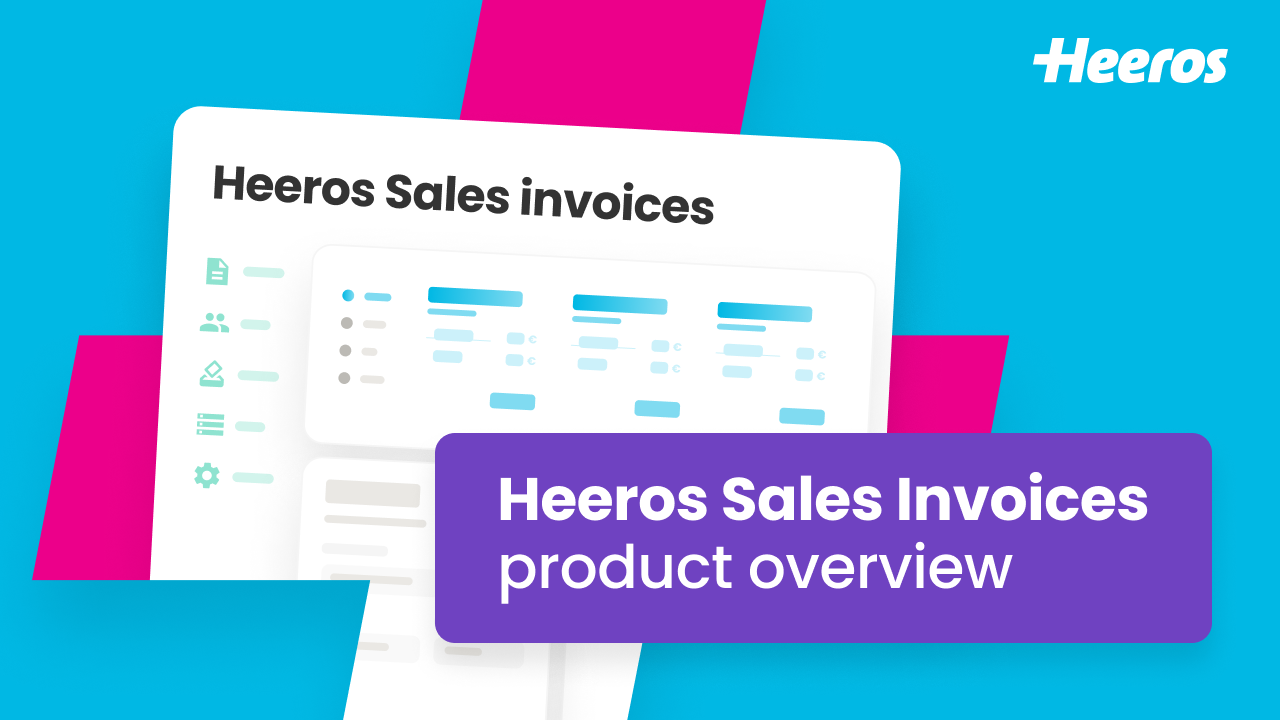Blog
The top 3 challenges international SMEs face with sales invoicing
"It would be a dream come true to have real-time visibility to all sales invoices in all countries."

This article explores the typical difficulties faced by SMEs (small and medium-sized enterprises) in handling international business-to-business (B2B) sales invoicing and accounts receivable, and outlines solutions to these challenges.
Common challenges in international sales invoicing
In early 2024, Heeros carried out research to identify the main issues Finnish small and medium-sized businesses encounter with sales invoicing and accounts receivable on an international scale. We've chosen a few statements from CFOs of these companies that accurately reflect the overall situation.
I receive Excel reports from the subsidiaries every month.
Challenge 1: Inconsistent management of invoicing and accounts receivable by subsidiaries
It's a frequent occurrence for subsidiaries to handle their invoicing and accounts receivable through methods and practices common to their country, leading to limited oversight for the head office over these processes. This is a natural outcome, as companies tend to prioritize their primary operations over aligning different systems and support processes during their international expansion. However, this approach is far from ideal. It usually results in a chaotic mix of systems and vendors, each shaped by the unique operational methods of a country. This complexity hinders clear visibility, efficient management, and the ability to scale the organization effectively.
E-invoicing doesn't work outside Finland.
Challenge 2: Ever-evolving e-invoicing mandate landscape
Beyond the internal hurdles previously discussed, the landscape of international regulations, with its country-specific nuances, introduces additional complexity. An increasing number of European nations are adopting or considering the implementation of e-invoicing mandates. These mandates allow authorities to demand that businesses have the capability to issue, receive, and/or report invoices electronically and following a strict set of requirements.
Typical characteristics of these mandates include:
- A standardized structured data format for invoices.
- The requirement to process invoices directly through the tax authority's system or to report these invoices in real-time (or near real-time).
- A phased rollout, targeting larger corporations first and smaller businesses in later waves. Companies operating in countries expected to introduce an e-invoicing mandate in the next few years, such as Germany, Poland, Spain, Belgium, and France, need to begin preparations well in advance.
Keeping up with the diverse e-invoicing mandates across countries requires a consistent effort to monitor these regulations and adapt to changes as they arise.
Additionally, while the European Union is working towards the standardization of e-invoicing and e-reporting through the VAT in Digital Age (ViDA) regulatory package, full implementation is not expected until between 2030 and 2032. Up until then, practices and standards for e-invoicing and e-reporting will vary across EU member states.
Everything works. Subsidiaries have organized invoicing and accounts receivable independently, I don't have a more detailed understanding of their processes.
Challenge 3: Missing a unified yet practical approach
The prevailing approach to sales invoicing—"every country for itself"—is increasingly becoming costly, non-transparent, and challenging to manage for many companies. In extreme cases, this style can even lead to severe penalties or even disrupt business operations if customers start rejecting invoices that don't comply with specific mandates.
Historically, companies have opted for one of two strategies to address this issue:
- Implementing the same ERP system across all countries.
- Adopting country-specific standalone solutions.
The centralized strategy, while uniform, comes with its own set of drawbacks, such as high expenses, lengthy ERP implementation projects, a significant risk of project failure, limited flexibility, and difficulties in addressing specific needs like e-invoicing or banking connectivity.
On the other hand, the decentralized approach, with solutions tailored to each country, leads to a confusing mix of systems and partners, delayed reporting, and a general lack of oversight across operations.
The solution: a unified invoice-to-cash (I2C) process
Consider a company operating in three different countries, each with its unique approach to handling invoices:
- In Country 1, they use an enterprise resource planning (ERP) system, coupled with a local online invoicing service and a banking connection provider.
- In Country 2, the invoicing process is entirely outsourced to a local accounting firm, which then reports monthly to the company's head office.
- In Country 3, a local employee manually manages all tasks using a local accounting and invoicing software, primarily sending invoices to customers via email.
By adopting the Heeros Sales Invoicing service, the company can standardize its invoice-to-cash processes across all these diverse environments, facilitating e-invoicing in every country while minimizing manual labor. Although accounting tasks continue to be managed locally, the integration with Heeros Sales Invoicing service streamlines these processes..png?width=630&height=250&name=Screenshot%20(19).png)
This approach not only ensures complete transparency over the company's invoicing and accounts receivable in all countries but also supports flexible and compliant e-invoicing at an affordable cost. Moreover, it simplifies the mix of suppliers and systems, enhancing operational efficiency by standardizing financial management practices across the organization.
More on international sales invoicing
Time to boost your business?
Let's start by going through your current situation and needs, and then proceed towards the most suitable solution for you. Book a meeting with our sales or reach out to us by filling the form.


.png)
.png)
.png)